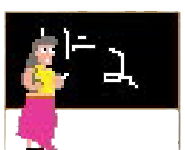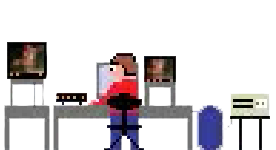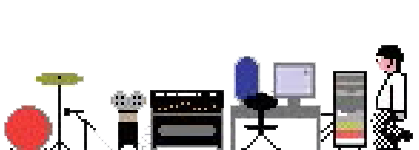The FTM&Co extensions for Max/MSP make it possible to program prototype applications that work with sound, music or gesture data in both time and frequency domain in a more complex and flexible way than what we know from other tools. This workshop will provide an introduction to the free Ircam libraries FTM, MnM, Gabor, and CataRT for interactive real-time musical and artistic applications.
Advanced Real-Time Sound and Data Processing with FTM&Co
Diemo Schwartz, Hans Leeuw, & Matthew Ostrowski
Saturday, May 26, noon to 6pm
Cost: Regular: $150, Members & Students (with ID): $135
Pay with PayPal or Credit Card
Location:
Harvestworks – www.harvestworks.org
596 Broadway, #602 | New York, NY 10012 | Phone: 212-431-1130
Subway: F/M/D/B Broadway/Lafayette, R Prince, 6 Bleeker
| Pay with PayPal or Credit Card |
|
Member/Student $135.00 USD |
The FTM&Co extensions for Max/MSP make it possible to program prototype applications that work with sound, music or gesture data in both time and frequency domain in a more complex and flexible way than what we know from other tools. This workshop will provide an introduction to the free Ircam libraries FTM, MnM, Gabor, and CataRT for interactive real-time musical and artistic applications.
The basic idea of FTM is to extend the data types exchanged between the objects in a Max/MSP patch by rich data structures such as matrices, sequences, dictionaries, break point functions, and others that are helpful for the processing of music, sound and motion capture data. It also comprises visualization and editor components, and operators (expressions and externals) on these data structures, together with file import/export operators for SDIF, audio, MIDI, text.
Through examples of applications in the areas of sound analysis, transformation and synthesis, gesture processing, recognition, and following, and manipulation of musical scores, we will look at the parts and packages of FTM that allow arbitrary-rate signal processing (Gabor), matrix operations, statistics, machine learning (MnM), corpus-based concatenative synthesis (CataRT), sound description data exchange (SDIF), and Jitter support. The presented concepts will be tried and confirmed by applying them to programming exercises of real-time musical applications, and free experimentation.
FTM&Co is developed by Norbert Schnell and the Real-Time Music Interaction Team (IMTR, http://imtr.ircam.fr/) at Ircam and is freely available at http://ftm.ircam.fr.
Prerequisites: A working knowledge of Max/MSP is required, knowledge of a programming or scripting language is a big plus for getting the most out of FTM&Co., having notions of object-oriented programming is even better. Users of Matlab will feel right at home with MnM.
Bio
Diemo Schwarz is a researcher–developer in real-time applications of computers to music with the aim of improving musical interaction, notably sound analysis–synthesis, and interactive corpus-based concatenative synthesis.
Since 1997 at Ircam (Institut de Recherche et Coordination Acoustique–Musique) in Paris, France, he combined his studies of computer science and computational linguistics at the University of Stuttgart, Germany, with his interest in music, being an active performer and musician. He holds a PhD in computer science applied to music from the University of Paris, awarded in 2004 for the development of a new method of concatenative musical sound synthesis by unit selection from a large database. This work is continued in the CataRT application for real-time interactive corpus-based concatenative synthesis within Ircam`s Real-Time Music Interaction (IMTR) team.
http://diemo.concatenative.net/
http://imtr.ircam.fr/imtr/Diemo_Schwarz






